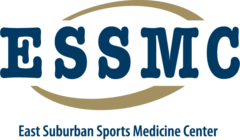Neck Pain
Whiplash Injuries:
A whiplash injury is a layman’s term for cervical sprain/strain injury typically sustained when the restrained driver of a vehicle is struck from behind. The mechanism typically involves a sudden forceful hyperextension of the neck followed by hyperflexion. The specific tissues in the neck that can be injured are multiple, including the muscles, ligaments, nerve roots, discs, etc. Occasionally, concussion type injuries can occur to the brain as a result of the forceful back and forth movement of the head. Symptoms of whiplash typically include pain, muscle spasm, and decreased mobility. Occasionally, additional symptoms can involve numbness and tingling in the arms, headaches, muscle spasms, etc.
The initial medical management of a whiplash injury typically consists of examination and imaging studies such as X-rays to determine or rule out serious involvement such as fractures. The physician typically prescribes medications to decrease muscle spasm and pain and may refer the patient to physical therapy. Physical therapy consists initially of a thorough examination of the neck injury including a history, range of motion measurements, examination of muscle strength, flexibility, and reflexes. The physical therapist, in conjunction with the referring physician, then can design a customized program specific to the needs of the injured person.
Physical therapy management of whiplash injuries usually consists of the application of physical therapy modalities (i.e. moist heat, electrical stimulation, ultrasound, ice applications.) as well as various hands on “manual therapy” procedures that might consist of massage, muscle stretching techniques, gentle joint mobilizations, and manual traction. The purpose of this phase is to decrease pain and improve mobility. The next step in the physical therapy program typically consists of active exercises to regain mobility, range of motion, and muscle strength. In the final phases of the recovery process, the program might become more specific to the needs of the injured person as in a work reconditioning program.
Cervical sprain/strain injuries that occur in motor vehicle accidents can be very challenging problems to deal with. Most people do recover from such injuries with minimal to no symptoms. The healing process can be relatively lengthy and the person often experiences good days and bad days during the recovery process. Performing home treatment regimens such as stretching exercises, moist heat or ice applications, use of supportive pillows, etc. is important in establishing a quick recovery and supplementing the physical therapy treatments
Herniated Disc:
A disc herniation is often caused by repetitive movements or heavy lifting which create extra stress on the disc. A herniation occurs when the outer ring of the disc, called the annulus, tears or ruptures. When the annulus weakens, the material inside the disc can squeeze out of the disc and apply pressure to a nerve root. This pressure can cause a cervical radiculopathy. Cervical radiculopathy symptoms include pain, numbness, tingling, and/or weakness in the arms and/or hands.
Physical therapy treatment for a cervical disc herniation begins with an initial evaluation which can include a subjective history, range of motion measurements, assessment of posture, and examination of muscle strength, flexibility, and reflexes. Typical interventions that are then utilized to address a cervical disc herniation include: modalities (moist heat, electrical stimulation, mechanical traction, ultrasound, ice), manual therapy techniques, and exercises to improve muscle flexibility, posture, and upper body strength. Education on ergonomics, sleeping position, and correct body mechanics with daily activities is also an important component to these types of treatment plans.
